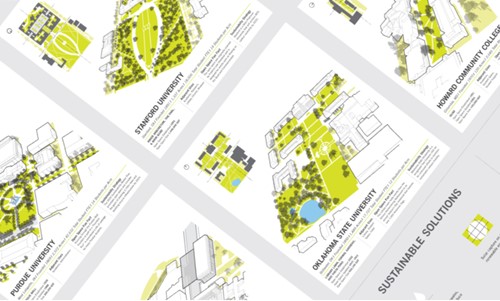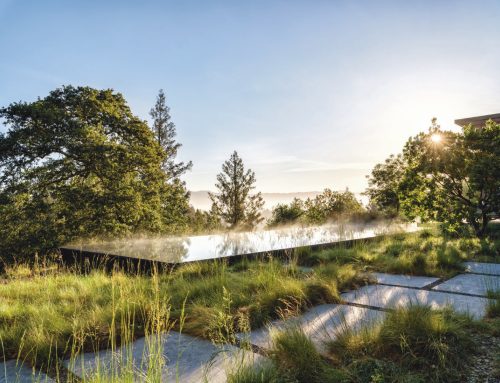posted by Amelle Schultz
For more than two decades Ayers Saint Gross has annually published a poster featuring campuses from colleges and universities around the world. We assemble this collection as a way to support these institutions in finding their common ground and celebrating their unique differences. We believe this understanding will lead to the creation of even better spaces in which to live, learn, and teach. We are pleased to present Comparing Campuses 2021.
See the poster here.
These posters have served as valuable tools to compare demographic, programmatic, and operational themes across entire campuses. This year, we chose a more human-scale study of exterior spaces. Our 2021 Comparing Campuses poster compares the iconic open space of eight institutions of various sizes, scales, geography, and age. From the UNESCO World Heritage Site of the University of Virginia Lawn to modern interpretations activated by program, the poster showcases the critical role open space plays in the heart of campus. Each poster block features both a bird’s eye perspective and 2D plan to give viewers a realistic feel of how the space interacts with its context, forges strong outward connections, and supports campus culture through placemaking. Through the vegetation, shape, and size, as open spaces are planned and updated, we see how institutions are focused on creating a sense of place shaped by resilient landscapes and equitable experiences.
Historically, open spaces were designed to support formal events like convocation and commencement. Now, we often think of landscapes as third places—spaces other than where you live and work that are focused on building community. The landscapes of today honor their timeless importance, while engaging users through seasonal activators, water features, strategic desire lines, art, and more.
Campus landscapes are an integral part of the collegiate experience and have always helped define the character of a campus and provided iconic places for the campus community to enjoy. Whether seeking moments of respite or space to gather with friends, our memories and experiences on campuses are critically linked to the time we spend outside and immersed in the campus landscape.
Consistent across all our research is that COVID-19 accelerated numerous shifts in higher education that were already underway. Campus outdoor spaces are no exception. The pandemic accelerated the prioritization of outdoor spaces as classrooms and social hubs as it was understood to be a safer way to still provide campus experiences. For instance, flexibility and adaptability is an ongoing trend in interior learning space design. This has also historically been a key element of how exterior spaces are planned and designed—the past year has reinforced the value of flexible and adaptable gathering spaces within campus. Well planned and designed outdoor spaces can adapt to be outdoor classrooms, collaborative study areas with a higher degree of accessibility, and social spaces that take advantage of the seasons to offer different programs and activities. Many campuses found this to be highly successful, and now look to turn what were intended as temporary solutions into long-term improvements.
As we emerge from the pandemic and students looks to return in the fall, now is an excellent time to celebrate the role open spaces play in keeping campuses vibrant, and to get excited for the expanded possibilities and expectations of open spaces moving forward.





